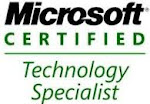Once we create the term set in SharePoint managed metadata,
we can make that available to all the site collection in the web applications
or specific site collections. We can do that by the steps shown below,
Navigate to site settings and click on Term store Management
in Site Administration section.
Right click on the term set that we want to make available to
all the site collections, and click on Move Term Set.
In the Term Set Move dialog box, click on the global term
set that to move and click on Ok button.
To make available for only specific site collections, In the
Site Collection Access section we have to enter the URL of the site collection
we want to make the term set available.






























